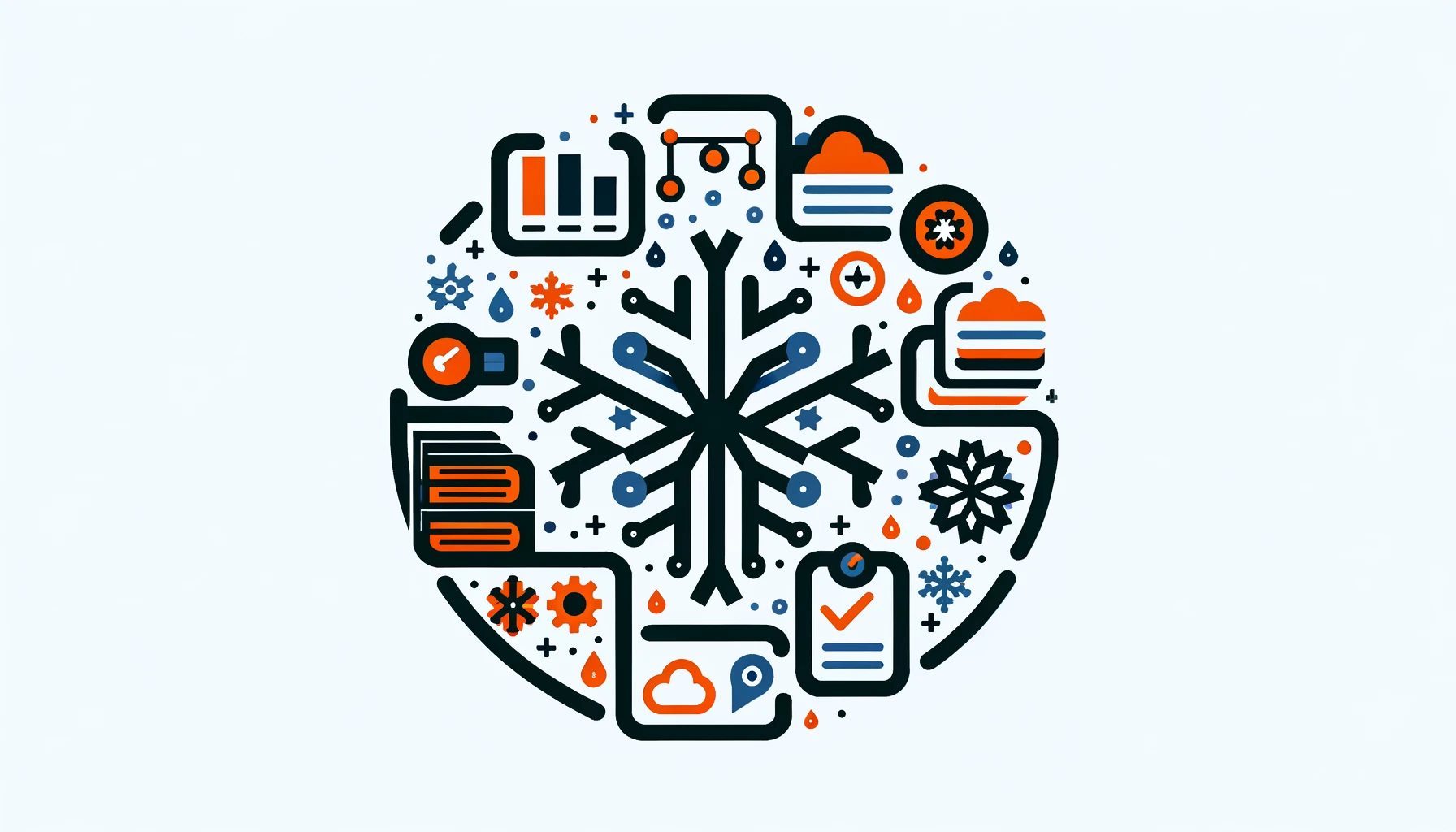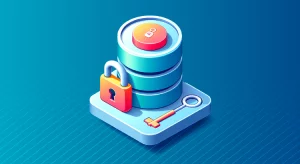
Snowflake Data Governance

Introduction
In today’s data-driven world, organizations are collecting and storing massive amounts of data in the cloud. The cloud has benefits like scalability, flexibility, and cost savings, but it also brings new challenges for data governance. How do you ensure your sensitive data is secure, compliant, and well-governed across your cloud data platforms? This is where Snowflake data governance comes in.
Snowflake is a leading cloud data platform that provides built-in tools and features for robust data governance. Snowflake helps you manage and protect your data, control access, ensure quality, and follow regulations all in one platform.
This article will explain the fundamentals of data governance in Snowflake. It will also discuss the benefits of having a fully managed and cloud-based data platform from the start. Having your data platform fully managed and cloud-based from the beginning makes data governance easier.
What is Data Governance?
Before diving into Snowflake specifics, let’s define what data governance is. Data governance refers to the overall management of the availability, usability, integrity, and security of the data used in an organization. It includes the policies, procedures, roles, and tools for ensuring data is consistent, trustworthy, and used properly.
Effective data governance enables you to:
- Ensure data security and privacy
- Maintain data quality and integrity
- Comply with regulations like GDPR, HIPAA, SOC
- Derive maximum value from your data assets
- Make data-driven decisions with confidence
Traditionally, implementing strong data governance required cobbling together multiple tools and platforms. But with Snowflake, you have access to a comprehensive set of data governance capabilities built natively into the platform.
Snowflake’s Approach to Data Governance
Snowflake takes a holistic and unified approach to data governance. Snowflake’s core architecture and features integrate data governance, rather than treating it as a separate discipline. This allows you to enforce governance policies and maintain security seamlessly as part of your normal data workflows.
Here are some of the key pillars of Snowflake’s data governance framework:
Centralized Data Storage
Snowflake stores data in a unique way. This allows multiple computer clusters to access and work on the same data simultaneously. A scalable cloud data storage layer centrally stores all your structured and semi-structured data. This removes separate data storage, creates one reliable source, and simplifies managing data assets throughout the organization.
Role-Based Access Control (RBAC)
Snowflake lets you control who can access what. You control this by creating custom roles and setting permissions for databases, schemas, tables, and rows. You can create hierarchical roles, implement dynamic data masking, and restrict access based on need. This ensures that users only see the properly filtered data.
For example, let’s say you have a FINANCE database with sensitive financial data. You can create different roles for different users in the system.
For example, an ACCOUNTANT role can have read access to all tables. A MANAGER role can have write access to specific tables. An ANALYST role can only view masked data. Here’s a simplified example:
USE ROLE SECURITYADMIN;
CREATE ROLE ACCOUNTANT;
GRANT USAGE ON DATABASE FINANCE TO ROLE ACCOUNTANT;
GRANT SELECT ON ALL TABLES IN DATABASE FINANCE TO ROLE ACCOUNTANT;
CREATE ROLE MANAGER;
GRANT USAGE ON DATABASE FINANCE TO ROLE MANAGER;
GRANT SELECT, INSERT, UPDATE ON TABLE FINANCE.PUBLIC.BUDGETS TO ROLE MANAGER;
CREATE ROLE ANALYST;
GRANT USAGE ON DATABASE FINANCE TO ROLE ANALYST;
CREATE MASKING POLICY MASK_FINANCE AS (VAL STRING) RETURNS STRING -> CASE WHEN CURRENT_ROLE() IN ('ACCOUNTANT', 'MANAGER') THEN VAL ELSE '******' END;
ALTER TABLE FINANCE.PUBLIC.PAYMENTS MODIFY COLUMN AMOUNT SET MASKING POLICY MASK_FINANCE;In this example, the ANALYST role can query the PAYMENTS table but will only see masked values in the AMOUNT column. The ACCOUNTANT and MANAGER roles see the actual unmasked data based on the conditional masking policy. This allows you to control access at a granular level.
Data Encryption
Snowflake automatically encrypts all data at rest and in transit using industry-standard encryption algorithms. This helps protect sensitive data from unauthorized access and comply with security requirements. You can also integrate with external key management systems for added control.
Data Lineage and Auditing
Snowflake automatically captures a complete data lineage and audit trail of all changes made to your data. You can track every transaction, see how data is flowing through your platform, and identify suspicious activities. The audit log remains immutable and users can utilize it for compliance reporting.
For example, you can use the QUERY_HISTORY view to see a record of all queries executed in your account:
SELECT query_text, user_name, role_name, execution_status, start_time FROM SNOWFLAKE.ACCOUNT_USAGE.QUERY_HISTORY WHERE start_time > dateadd(hour, -1, current_timestamp());
This query shows all queries run in the past hour along with key metadata. You can use this for auditing, troubleshooting, and usage monitoring.
Data Sharing and Collaboration
Snowflake lets you easily share live data with others across different regions, clouds, and partners using Snowflake Data Sharing. Rather than copying data, Snowflake uses secure database links to share data in a governed manner. The data you share is always current and you can choose which parts to share at different levels. This enables secure data collaboration while maintaining centralized governance.
Benefits of Cloud-Native Data Governance
So why choose a cloud-native platform like Snowflake for your data governance needs? Here are some key benefits:
Simplified Management
Snowflake provides a cloud data platform that handles infrastructure, software updates, and data security for you. This means you can use your data to make decisions without worrying about the technical side of maintaining a data platform.
Snowflake’s cloud solution ensures your data is safe and current, as Snowflake manages the platform for you. This allows you to streamline your data operations and maximize the value of your data without the need for extensive IT resources or expertise.
Snowflake’s managed approach helps organizations become more agile and efficient in data analytics. This allows them to free up time and resources to focus on business outcomes and innovation.
Scalability and Flexibility
Snowflake created a cloud data storage solution to make storing and managing large amounts of data easy and affordable. Users can store a lot of data without running out of space because they can store petabytes of data.
One of the key benefits of Snowflake’s cloud data storage is its elastic scalability. Users can adjust their storage capacity as needed without upfront costs or over-provisioning. This allows for flexibility in scaling up or down based on their needs. Users can easily manage increasing data volumes and changing needs without needing to buy more hardware or resources.
Users can save money by only paying for the storage capacity they use. This model allows users to pay for storage as they need it, giving them more control over costs.
Snowflake’s cloud storage is a good option for businesses of any size. It offers a dependable, flexible, and affordable way to store and handle data.
Unified Data Platform
Snowflake’s platform puts storage, computing, security, and governance together, so you don’t have to move data between different tools. This implies that you can perform all your data tasks, such as combining data, or conducting data science, in Snowflake. By consolidating all of these processes into one platform, you simplify your architecture and strengthen your governance posture.
This not only streamlines your data operations but also ensures that your data is secure and compliant with regulations. When all your data processes are in one place, it is easier to track and monitor data usage. You can also easily setup access, and permissions.
This helps improve your governance capabilities. Snowflake’s platform helps organizations manage and analyze data easily and securely, making it simpler to use their data effectively.
Continuous Availability
Snowflake, a cloud-based data platform, specifically provides high availability and disaster recovery capabilities. This means that even in the event of unexpected disruptions or failures, your data will remain accessible and protected.
One of the key features that enables this level of reliability is Snowflake’s built-in data replication functionality. This feature automatically duplicates your data across multiple locations. It ensures that a backup is always available in case of a failure.
Snowflake also has failover capabilities. Snowflake has failover capabilities. This means that if one copy of your data is not available, the system will switch to a backup copy. This ensures that you can still access your data.
In addition to data replication and failover, Snowflake also offers cross-region backups. This means you can save your data in different places, reducing the risk of losing it if a disaster occurs. Utilizing these functionalities, you can ensure your business operates seamlessly even amidst disturbances, guaranteeing your data is perpetually reachable.
Conclusion
Effective data governance is essential for any organization that wants to securely leverage its data assets. Snowflake makes it easier to control, protect, and understand your data using a cloud-based system for data governance. Putting all your data and governance tools in one place can simplify things, improve efficiency, and ensure security and compliance.
This approach allows for easier access to information, streamlines processes, and reduces the risk of data breaches. It also helps in maintaining regulatory standards and protecting sensitive information. Overall, consolidating data and governance tools in one location offers numerous benefits for organizations.
If you have sensitive data in Snowflake, it’s a good idea to add extra security to comply with your policies. DataSunrise provides user-friendly and flexible tools for database security, data discovery and classification, dynamic data masking, and automated compliance and audit reporting. Request a free online demo to see how our solutions can help secure your Snowflake environment.
